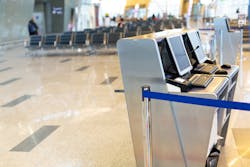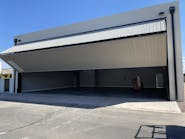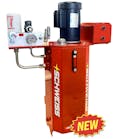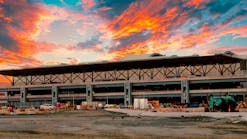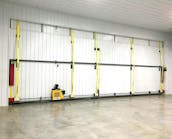Air travel is beginning to rebound from the COVID-19 pandemic. In June, the industry hit a new milestone of 2 million travelers in one day, which is the most since March of 2020.
But now the maintenance management industry is facing a similar challenge as many other industries in 2021: labor shortages with heightened cleaning and maintenance expectations.
So not only are maintenance management teams struggling to hire new employees, but they have added responsibilities from air handling units, more stringent cleaning protocols, and expanded airports.
Labor Shortage in Maintenance Management
In April 2021, U.S. job openings reached 9.3 million, according to the Bureau of Labor Statistics. There have never been that many job openings since the bureau began tracking job openings in 2000.
The result for the maintenance industry has meant using contracting companies to fill in for the many vacancies on airport teams. That’s putting another stress on the industry because the contracting companies can’t hire fast enough or train and prepare maintenance workers to accommodate the growing need for staffing.
Maintenance managers are being pushed to be more streamlined in determining what activities to complete each day. Efficiency is the name of the game.
What’s causing the labor shortage? Some speculate it’s a change in employee expectations. They want higher pay, more flexible work hours, and remote work. But maintenance management positions simply aren’t remote jobs and flexibility in the industry is challenging to accommodate. Many of the skilled workers have reached retirement age, and the pandemic became the exit strategy for them.
If the labor shortage begins to subside, it will take time to train and prepare new maintenance workers. The result will continue to be doing more with less. Companies will need to invest in strategies that incorporate more technology to lead them to more predictive maintenance, focusing on priorities to avoid failures.
Increased Maintenance from the Pandemic
Currently, it doesn’t look like the new maintenance and cleaning routines the industry added because of the pandemic are going to end. These new requirements for the maintenance management team include:
- Higher efficiency air handling units
- New technology in restrooms and public areas
- Greater emphasis on cleanliness throughout the airport
- Increased cleaning protocols and timeframes
Perhaps some of these procedures were long overdue and will stay in place for the future making everyone a bit safer from germs and bacteria. Filter changes may occur more frequently because of COVID, but it’s just one more thing to manage during these challenging times.
While fewer people were traveling, construction projects accelerated at many airports across the country. With that construction came new assets to manage and maintain and expanded terminals with newer technology changing the way the assets need to be maintained.
How Airport Maintenance Teams Are Adapting
With the added pressures, airport maintenance teams are required to plan more and carefully schedule maintenance activities.
Technology has made this coordination simpler thanks to Computerized Maintenance Management Systems (CMMS). Managers can see preventative maintenance schedules far in advance to plan out activities based on current staffing. And the CMMS is alerting managers of imminent breakdowns to prevent such incidents using run time and smart sensors, which can put a strain on air travel and added demands on maintenance management while staffing is limited.
New devices and sensors can use real-time data to inform them about an imminent breakdown and be tied into the CMMS. For example, vibration and heat data in real-time can trigger work orders before a motor or compressor fails, further helping maintenance managers prioritize the most important work with their limited staffing and resources.
Harry Kohal is the vice president of business development for Eagle Technology, Inc. the CMMS of choice at Chicago Midway International Airport. Harry has more than 30 years of experience working with facility managers and has seen three decades of changes and impacts on the industry.
